I like to envision myself as one of those hardy pioneers who, when an arctic blast blew their way, would walk out shirtless and barefoot through the snow and ice to chop wood for a family of 10. But these days, harsh winters keep most of us indoors, snuggling with the cats while consuming hot chocolate and freshly baked chocolate-chip cookies. As much as I like to hibernate in winter, though, boredom tends to get the best of me sooner or later — especially once the cookies are gone. So it was off to the ice cliffs, accompanied by Diamond Brand climbing guide Derek Turno.
I met him at the West End Bakery in Asheville on a frigid January morning. Tall, bespectacled and bearded, he greeted me in his croaky voice. There was an ease and confidence about him that soothed my trepidation concerning the day's climb. After stocking up on day-old, coconut-flake muffins and coffee to go, we walked outside. "Might as well save some dinosaur juice, so why don't you ride with me?" said Turno, so we piled into his Subaru and headed west.
Ice climbing is actually a growing sport in Western North Carolina. When conditions allow, there are typically 6 to 8 climbers hovering around the most popular spots, though a hot, dry winter is all it takes to shut the whole thing down, Turno warned. As recently as a couple of years ago, Diamond Brand didn't even carry ice-climbing gear, but now they do, he explained. And though there might be a few hard-core Everest types out there, you mostly see local rock climbers out for a winter challenge.
In Canton, we picked up state Highway 215. Twisting and turning, we made our way up to one of the most popular ice-climbing spots in Western North Carolina (appropriately known as "215") and pulled into a parking area near the cliffs.
I opened the car door, swung my legs out, and just sat hunched for a moment, shaking off a bit of car sickness from the winding ride. Meanwhile, Turno tossed some huge, hard-plastic boots at my feet and handed me some crampons. They were cumbersome, but when I stood up, the steel prongs dug into the snow.
Approaching a low-hanging, frozen curtain, Turno handed over one of his two ice axes and directed me to take a chop, using more of a wrist-flick technique than a full arm swing. The jagged point struck home, and ice splinters splashed my face.
"If you hit the ice where it's concave, the point sticks better, whereas bulbous ice shatters when it's hit," he explained. Anytime you dislodge a big chip, you want to yell "Ice!" to warn others below, he continued. And since the ax point lodges in the ice like a barbed hook, it's best to use an under-and-reverse push from the wrist to disengage it rather than a sharp, desperate yank on the handle, which will only bury the point deeper.
There's a similar counterintuitiveness to using the crampons, I learned. Despite the many metal spikes protruding from the bottom, it's the ones sticking out the front that do the climbing. The others are mainly for distance trekking over sheets of ice, not vertical surfaces. And once those metallic incisors are kicked in, one tends to move into a tip-toe position to keep them wedged tight, but that temptation must be resisted, said Turno. Instead, you should let your heels drop to lock the jagged metal spikes in place.
While I was busy practicing, eight other climbers were already under way. One person would be posted at the base of the cliff belaying for the climber on the ice. Meanwhile, someone else had to hike around the mountain and secure the rope around a tree up top. From there, they would toss the rope down so those below could secure one end through the climber's harness and tie it off with a figure-eight knot. The other end would go through the belayer's harness and an ATC device, which helps reduce slippage as the climber ascends and controls rope flow and tautness on both the ascent and the final rappel down.
But rather than spending a half-hour hiking to the top and back, Turno befriended a group that already had their rope set, slotting me in after everyone else was done. One of the guys, Doug Houghton, introduced himself, saying he's been coming up here with his buddies since the 1970s.
As I stepped toward the ice cliff, though, someone shouted, "Watch the rope!" Not watching where I was going with my crampons on, I'd almost shredded our new friends' rope.
After donning a helmet, I tied in and stood regarding my twin axes as we reviewed the basic climbing calls: "On belay," "Belay is on," "Climbing" and "Climb on." One swing and I was in; then a forward kick, a step up and I was rising. "Swing, pull, kick, alternate, release and repeat" was my mantra. As I ascended, I could hear Turno calling out below: "Nice. Nice. Good, solid stance. Yeah. Awesome. Doing good. Very nice. There you go. You're getting the hang of it now."
I stole a few looks back to take in the scenery, but my main goal was just getting to the top so I could go back down and warm up my hands. For some reason, I hadn't put a high priority on wearing gloves, and my hands felt like big, cold flippers of flesh clamped around the ax handles.
Giving the scenery one last glance from up top, I heard Turno shout: "Lean back and just walk backward!" and "Take the axes out!"
"Oh, yeah," I thought, as some other guys advised: "Straighten your legs! Keep your ass low and feet really, really wide!"
Turno was right, after all — ice climbing isn't all that hard, sort of like climbing a ladder. After I was down, he jumped in for a quick turn. But if I'd been distracted for just a few seconds, I'd have missed his ascent: He was that fast, like Spiderman on ice.
To me, though, ice climbing seemed like hammering a lot of invisible nails up a brittle wall of glass: It felt more like a winter yard chore than sport. Meanwhile, all that hard work had left me starving, so I was glad I had another muffin left.
[Freelance writer Jonathan Poston lives in Asheville.]
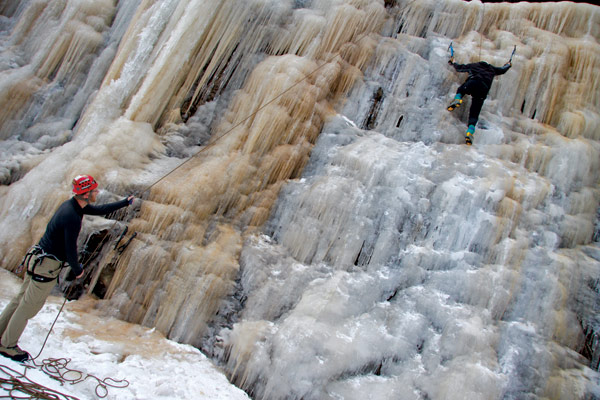
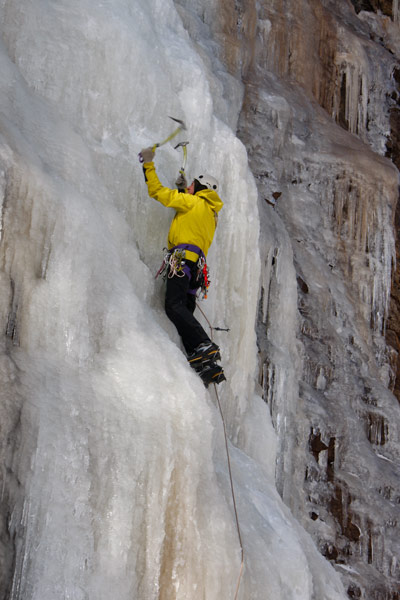
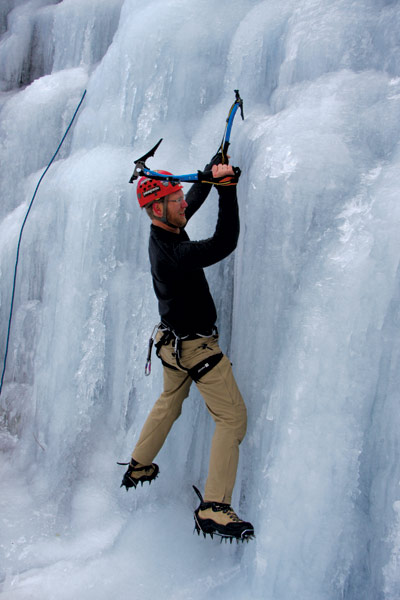
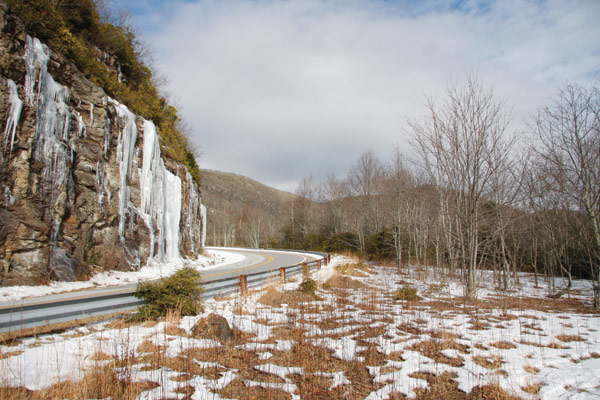
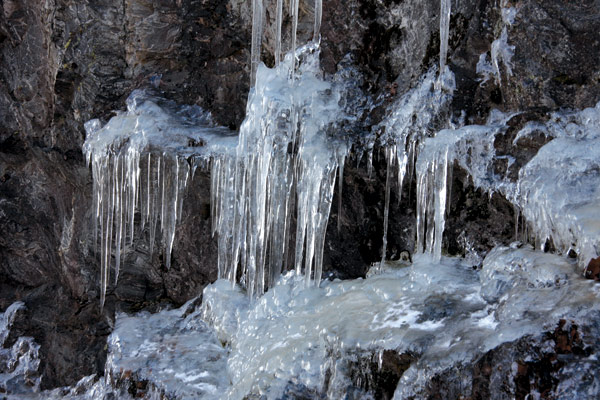
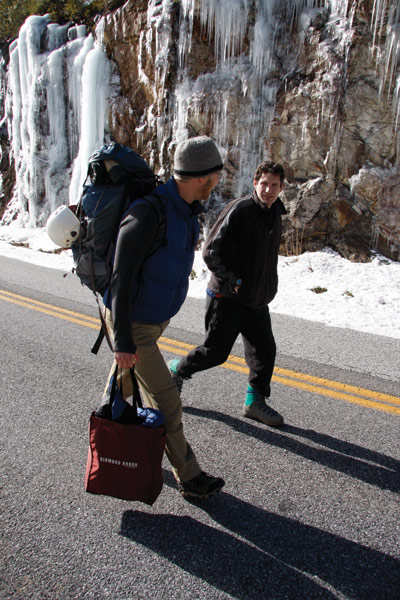


Know your gear, know your partner, know what the hell you’re doing. My father was killed ice climbing in the Grand Tetons.